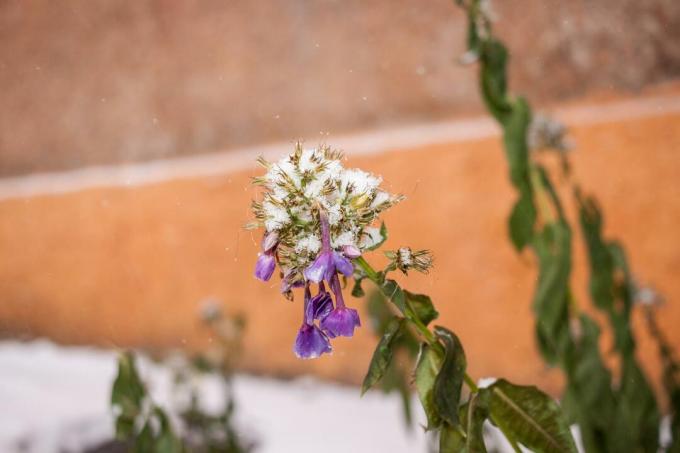The phlox is quite easy to care for, but a cut now and then won't hurt. We explain what to consider when cutting phlox.

The old stems must be removed before the new shoots in spring. But when exactly? And how was that again with the pruning of smaller phlox species? The most important thing about pruning the flame flower (phlox) see below.
cut phlox
When it comes to pruning the phlox, there is a key difference between creeping and tall growing phlox species. Both should be trimmed once a year, but the methods and purposes are very different. Large species such as the tall perennial phlox (Phlox paniculata) are only pruned in winter when their shoots have died. Small species, on the other hand, are pruned as they grow to beautify their growth habit.
Cut phlox: the right time
When pruning, a distinction is made between large and creeping types of phlox. In the following you will find out exactly what the differences are.
Cut phlox: Cut back large species
Large species include, for example, tall perennial phlox and large-leaved phlox (Phlox amplifolia). In late autumn, after the stems of large species of phlox have completely withered, they can be cut. However, it is better to leave them over the winter and only cut them off in the spring just before new growth. The dead stems offer a nice winter quarters for many insects. It is also possible to cut back the inflorescences after the flowers have withered. However, this measure is not necessary. It only prevents the plants from self-seeding.

Cut Phlox: Cut back creeping species
Creeping phlox species include the cushion phlox (Phlox douglasii) and the carpet phlox (Phlox subulata). These can be cut back immediately after flowering, i.e. in early summer. This is how the wintergreen phlox species sprout fresh. With a bit of luck, you can even look forward to a second bloom afterwards.
Cutting phlox: instructions
In general, phlox does not need to be pruned at all. Pruning phlox is purely a cosmetic measure. With deciduous phlox species, you can plant the withered shoots from the previous year without worrying, i.e. cut them off directly on the ground. Withered inflorescences are only cut back to where the leaves begin. Evergreen phlox species such as the cushion phlox can be shortened by two thirds after flowering in spring to stimulate new growth.
More to Care of phlox Find out here in our special article on the subject.



